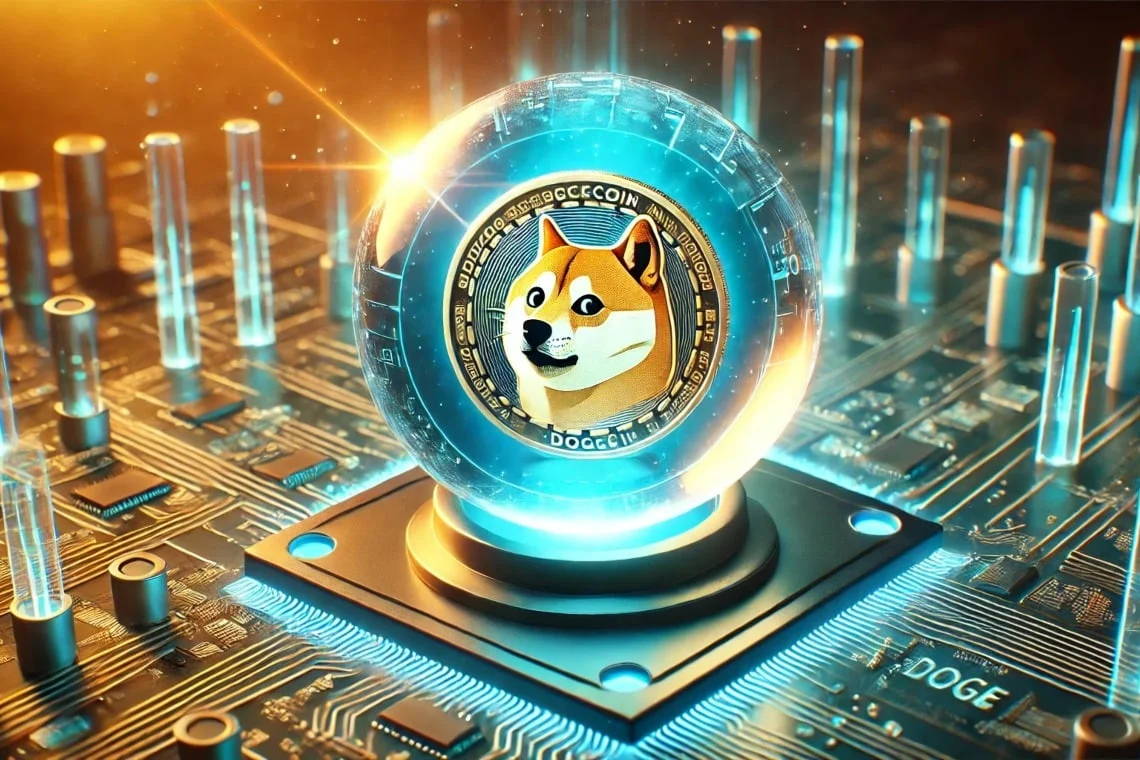Despite a short-term dip caused by hot PPI data, Dogecoin remains up 4% this week and 15% over the past month. However, compared to some other large-cap altcoins, it’s somewhat lagging behind.
This month, Ethereum is up 48%, Cardano is up 26%, and BNB is up 22%. Additionally, both BNB and Ethereum are trading near or at record levels, while Dogecoin is almost 70% below its all-time high (ATH).
So, the question is whether the $1 Dogecoin dream is still achievable this year or if the community will need to wait longer. To gain insight, we asked ChatGPT for its opinion.
We also inquired about a new Dogecoin alternative called Maxi Doge, which seems to be gaining momentum early in its presale. Let’s explore the chatbot’s analysis of both projects.
What It Would Take for a $1 Dogecoin
ChatGPT outlined three key points involved in Dogecoin hitting $1. First off is significant market capitalization growth, as a $1 Dogecoin would require a $147 billion valuation. However, this could increase further due to 5% $DOGE annual emissions.
ChatGPT states that achieving this valuation would require “multiple high-impact catalysts,” which could include: a $150,000 Bitcoin, an integration into X, the implementation of a major token burn mechanism or supply cap, and a resurgence of retail mania similar to 2021.
Finally, the chatbot emphasizes that a technical breakout above $0.27 could be crucial for hitting $1, noting that it could create bullish chart patterns such as a golden cross.

Here’s When It Might Occur
None of the requirements listed above seems too unreachable, especially in a bull market. That’s why ChatGPT states that Dogecoin could reach $1 in late 2025 or early 2026 in its bullish scenario.
However, its conservative and middle-of-the-road approach scenarios suggest that Dogecoin may not reach $1 until 2030 or later, noting that “some algorithmic models suggest DOGE may only surpass $1 in the distant future.”

Dogecoin’s main obstacle is competition from newer meme coins. Many offer fresher branding and present more upside potential, therefore drawing investors away from $DOGE and slowing its growth rate.
Alongside established players like Shiba Inu and Bonk, emerging competitors like Maxi Doge are posing stiff competition. Maxi Doge’s early momentum, combined with its current low price and viral appeal, has drawn ChatGPT to back it for substantial gains this year.
ChatGPT Says Maxi Doge is Poised for 1,884% Return
Maxi Doge is a Dogecoin-themed meme coin more closely aligned with modern meme culture. He’s the typical crypto degen: he lifts weights, hasn’t touched grass in years, and considers anything less than 1,000x leverage ‘boomer’.
The project offers a fun and fresh alternative to Dogecoin, and it’s gaining serious momentum. After launching a presale last month, it has already raised nearly $1 million – a major milestone that often triggers hype and FOMO. This could lead to larger inflows and price rallies in the months ahead.
According to ChatGPT, the presale momentum and the timely launch during a bullish market phase point to strong potential.

It also highlights that Maxi Doge provides unique utility benefits over Dogecoin, including staking rewards, along with plans for DeFi integrations and community giveaways.
Based on these factors, ChatGPT suggests that $MAXI could reach between $0.003 and $0.005 after listing on exchanges.

From the current presale rate of $0.000252, this indicates a potential 1,884% return – something that would be difficult to achieve with most established meme coins.
However, the $MAXI presale price will increase as the campaign progresses, with the next jump in less than a day. So, if you want the best price, it’s best to act quickly.
Disclaimer: This media platform provides the content of this article on an "as-is" basis, without any warranties or representations of any kind, express or implied. We assume no responsibility for any inaccuracies, errors, or omissions. We do not assume any responsibility or liability for the accuracy, content, images, videos, licenses, completeness, legality, or reliability of the information presented herein. Any concerns, complaints, or copyright issues related to this article should be directed to the content provider mentioned above.






